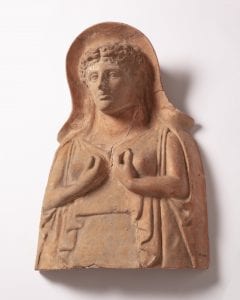Museum magic: Our mesmerising autumn exhibition
Posted on by Fay Curtis.
Work is underway to conjure our autumn exhibition, Magic which will be enchanting visitors at Bristol Museum & Art Gallery from October 2019.
Brought to you by the team who curated the hugely successful death: a human experience exhibition, this show will explore people’s personal relationships with magic, revealing the power of magic in everyday life and challenging perceptions of worlds beyond our own.
This stunning exhibition will include over 200 items from our own collection from across the world and millions of years apart.
The exhibition will move away from the modern idea of magic being based on illusions and allow visitors to travel into and amongst other worlds. We’ll reveal new arenas of magic; from communion with the gods; to the healing of cunning folk; and the power of charms to protect people from harm.
European works of art depicting magical creatures will appear beside beautifully decorated hide coats worn by native North American hunters designed to help them catch their prey.

Among the artworks on display is ‘An Ecstasy’ by Fred George Swaish dated 1913.
‘An Ecstasy’ is a mysterious painting – it doesn’t quite fit with Victorian and Edwardian fairy paintings illustrating tales. It is ambiguous and slightly unsettling and has been compared to Rococo imagery, with its pink and gold palette and overall lightness. The fairies in this painting create links to magic and the supernatural – not unusual for Swaish’s paintings.’
– Julia Carver, Visual Art curator
We will also be displaying a terracotta plaque showing the goddess Persephone.

‘Originating from a 4th century BC temple to the god Apollo in Delphi, Southern Greece. This plaque may have been used as decoration on a building in Delphi in around 480-440 BC. It was probably placed there as a votive offering – an object displayed or deposited in order to seek protection from supernatural forces. In Ancient Greece votive offerings, such as these plaques would be kept on display in the sanctuary dedicated to a particular god for a time then ritually discarded.’
– Lisa Graves, World Cultures curator
Accompanying ‘An Ecstasy’ and the goddess Persephone will be a colourful woman’s tunic, also known as a choli, dated between 1970-1985. Tunics like this were often given as part of a dowry for a bride from Megwhal people in the Tharparkar desert region of Pakistan.

The small mirrors (shisha) sewn onto the tunic, not only make it more beautiful but people believed that the mirrors would reflect bad luck away from the wearer.
We hope this sneak peek of Magic has inspired you. We look forward to welcoming you to the exhibition later in the year.
£10 could help develop more exciting exhibitions using our own collections.
2 comments on “Museum magic: Our mesmerising autumn exhibition”
Well, it was good to see expressions of witchcraft from different parts of the world of course, and some of the single objects were fascinating if you could focus on them properly against the backdrop of 3 videos of people talking about things like tarot cards and so on. I don’t think the Pitt River’s system of classification worked in that space and there was an awful lot of reading the audience was expected to attend to. But above all else, to have left out Mr Crowley seemed to me as serious as having a wall art exhibition and forgetting to mention Banksy. Even though Crowley was a hideous character, he was a very serious practitioner of magic. I noticed a quote from W. B. Yeats, but there was much more to Yeats that should’ve been included in an exhibition about magic as he, along with Crowley belonged to the Golden Dawn. Yeats you could’ve ignored, Crowley…. I don’t see how you could. But you did.
Hi Rebecca, thank you for your feedback. We apologise if the exhibition didn’t live up to your expectations. There was quite a lot of text but it was laid in a hierarchy of different levels of detail so that even if you just read the main intro panels to each section you might understand the premise of the space and then perhaps dive into individual objects or sections that attracted you. It would be a very keen visitor who read everything, but in addition it also means that repeat visits are encouraged if possible. Magic is such a massive and difficult topic to define that we knew it would be impossible to cover all aspects of it. Decisions were made to leave out or include topics based on whether we had objects to illustrate those areas or whether we could fit certain topics in due to their size and complexity. Aleister Crowley and his style of occultism, along with Satanism and other practices linked to Freemasonary or Spiritiualism were all areas we felt we couldn’t do justice to on both counts. We hope to see you again soon.